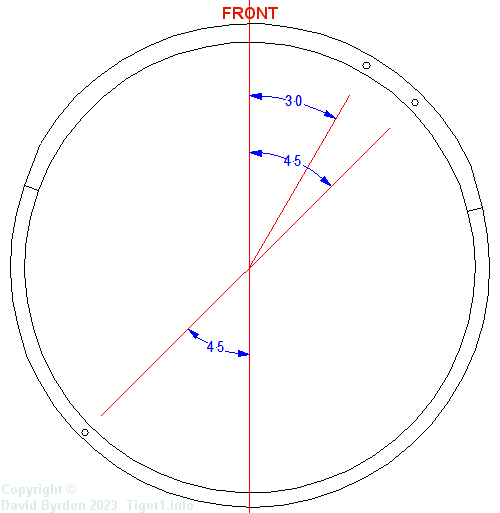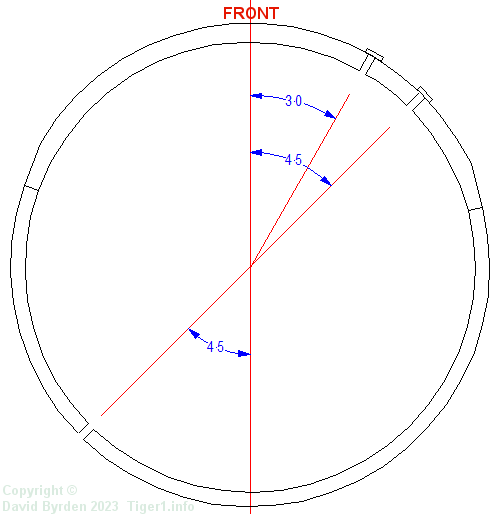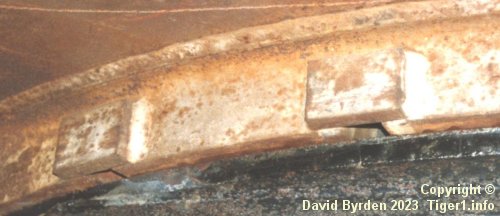It being undesirable for tank turrets to swing about freely during travel, they are provided with locks. The Tiger originally had a lock similar to, but stronger than, the locks of the earlier Panzer III and Panzer IV. It comprised a post that would rise up from the hull roof to engage with a hole in the turret.

This diagram represents the bottom edge of the turret walls, looking up from below. Three small holes are drilled in the walls, at specific angles. The locking post was located on the hull roof at 45 degrees left of the forward direction, therefore the turret could be locked facing directly forward, directly to the rear, or 15 degrees left of forward.

Later, at a time that does not seem to be documented, the holes were replaced by straight slots, about 36mm wide, cut through the armour. They were at the same positions as the holes, and the locking post was unchanged. It's very likely that this design change occurred when the turret armour drawings were reworked to introduce the escape hatch.

The slots introduced a new danger: shrapnel might pass through them into the area of the turret bearing ring. For that reason, 90mm x 60mm x 20mm squares of steel plate were welded over the forward two slots, as this photo shows. The rear slot was almost entirely covered by the hinge of the escape hatch.
In the middle of 1943 a "New Turret" was introduced. It had an internal clamp that could lock it at any angle. Therefore it didn't need to use the post, even if placed on an old Tiger hull. The "New Turret" had no locking slots in its bottom edge.
[1] Survey of Tiger 250122, at Bovington museum, by David Byrden